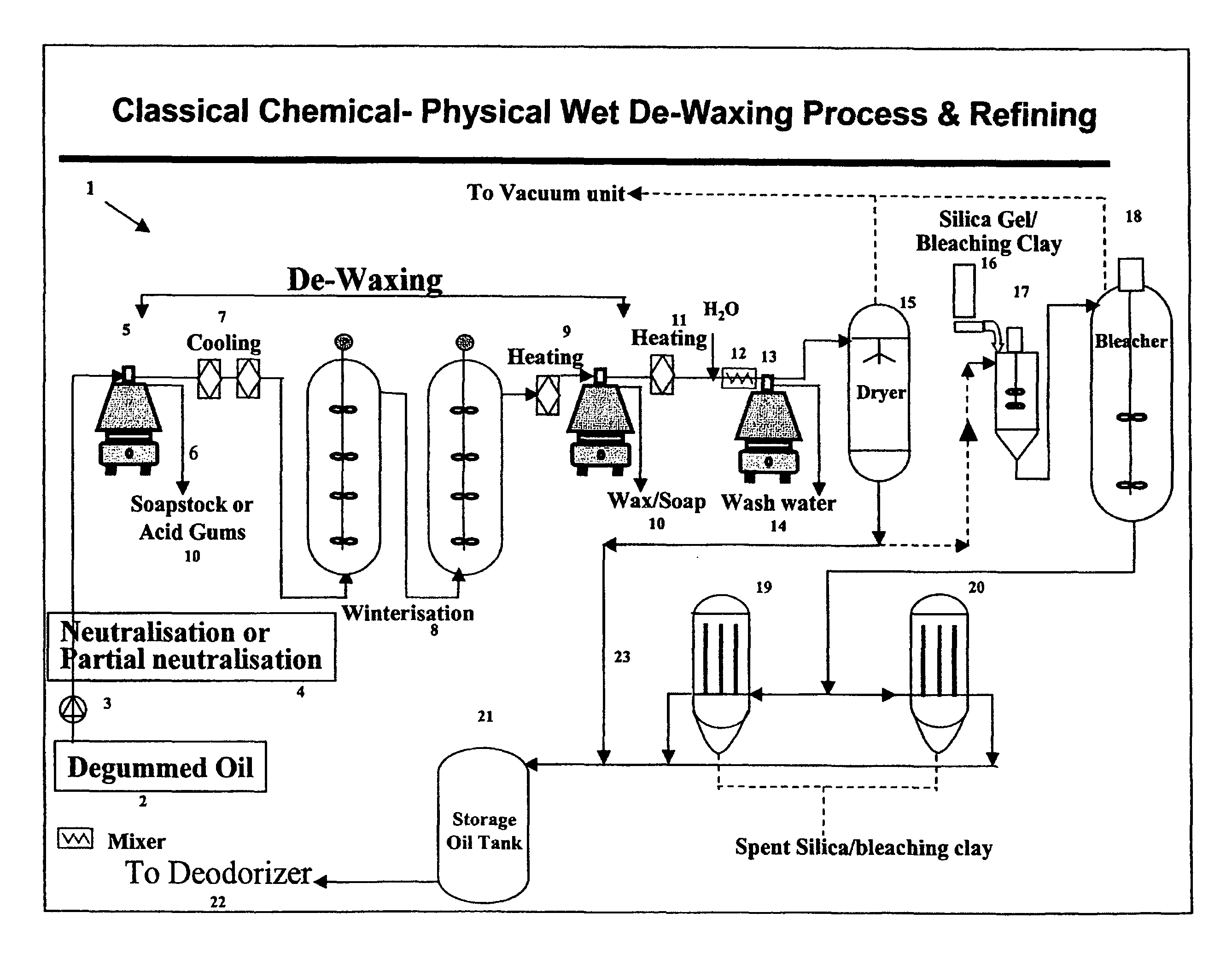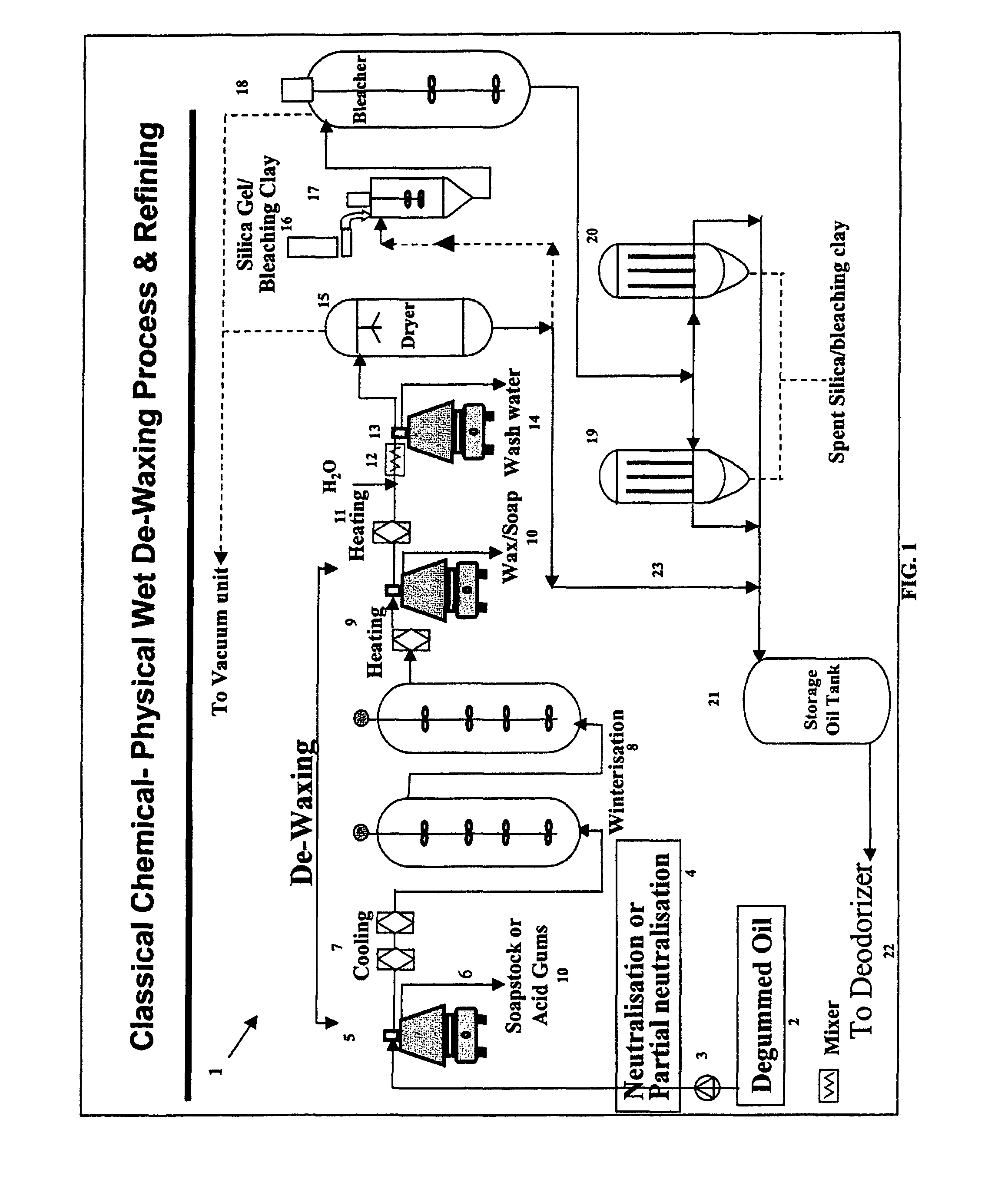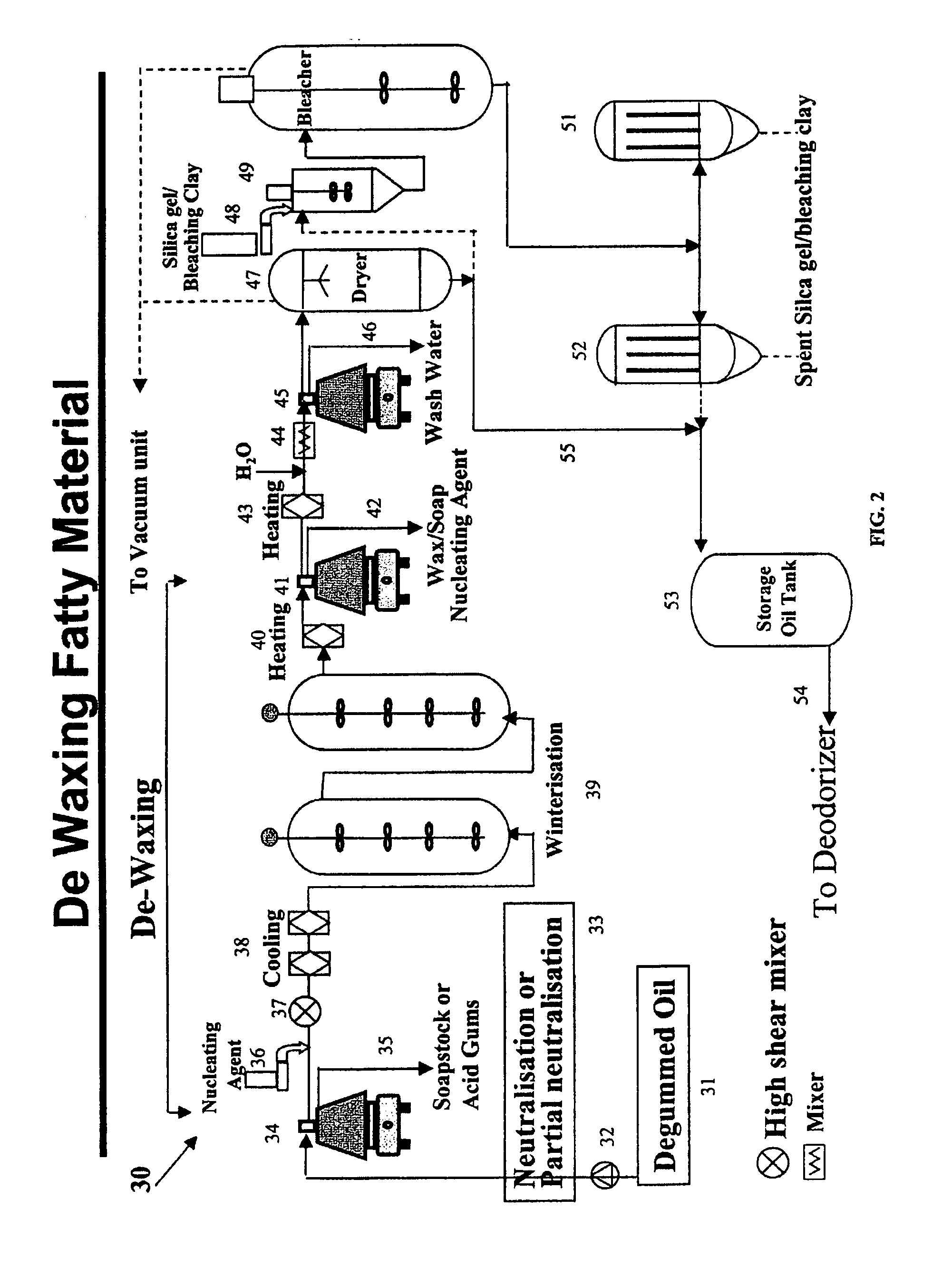Purification of fatty materials such as oils
a technology of fatty materials and purification methods, applied in the direction of fatty-oil/fat refining, separation processes, filtration separation, etc., can solve the problems of inefficiency of known methods, inability to maximize oil output, and inability to reduce production costs and/or cleaning, so as to reduce the need for filter changes and/or cleaning, the effect of reducing the need for nucleating agents
- Summary
- Abstract
- Description
- Claims
- Application Information
AI Technical Summary
Benefits of technology
Problems solved by technology
Method used
Image
Examples
examples
[0051]The present invention is further illustrated by the following examples, which are not to be construed in any way as imposing limitations upon the scope thereof. On the contrary, it is to be clearly understood that resort may be had to various other embodiments, modifications, and equivalents thereof which, after reading the description herein, may suggest themselves to those skilled in the art without departing from the spirit of the present invention and / or the scope of the appended claims.
examples 1-4
[0052]A 2 liter sample of enzymatically degummed sunflower oil was ordered from Cereol Mannheim and subsequently heated in a tank to 50° C. Under agitation (i.e., magnetic stirring), 0.1% ammonia (25%) is added and the agitation and heating are continued for another 20 minutes. The oil is then cooled to 10° C. and treated with different types of colloidal silicas, LUDOX® PX30 silica (Example 1), LUDOX® PW30 silica (Example 2), LUDOX® PW50 silica (Example 3), and LUDOX® PT40 silica (Example 4), all available from Grace GmbH & Co. KG. Each colloidal silica is added at different concentrations (0.1%, 0.3% and 0.6%) to 100 gram samples of the oil and agitated slowly for 2.5 hours at 10° C. The 12 samples are then centrifuged at 2300 RPM in a J2-21 WE centrifuge, available from Beckman Coulter, Inc., in order to separate the heavy phase from the light phase, which comprises the treated oil samples. After decantation, the treated oil samples are dried at 70° C. under vacuum for 15 minutes...
examples 5-8
[0053]A 2 liter sample of enzymatically degummed sunflower oil was ordered from Cereol Mannheim. The oil is then without any treatment with caustic cooled directly to 10° C. and treated with different types of colloidal silicas, LUDOX® PX30 silica (Example 5), LUDOX® PW30 silica (Example 6), LUDOX® PW50 silica (Example 7), and LUDOX® PT40 silica (Example 8), all available from Grace GmbH & Co. KG. Each colloidal silica is added at different concentrations (0.1%, 0.3% and 0.6%) to 100 gram samples of the oil and agitated slowly for 2.5 hours at 10° C. The 12 samples are then centrifuged, in order to separate the heavy phase from the light phase, which comprises the treated oil samples. After decantation, the treated oil samples are dried at 70° C. under vacuum for 15 minutes. The colloidal silica treated oil samples and an untreated oil sample are then maintained at −5° C. for 24 hours. None of the colloidal silica treated oil samples developed any haze or wax formation, while the un...
PUM
| Property | Measurement | Unit |
|---|---|---|
| temperatures | aaaaa | aaaaa |
| temperatures | aaaaa | aaaaa |
| weight | aaaaa | aaaaa |
Abstract
Description
Claims
Application Information
 Login to View More
Login to View More - R&D
- Intellectual Property
- Life Sciences
- Materials
- Tech Scout
- Unparalleled Data Quality
- Higher Quality Content
- 60% Fewer Hallucinations
Browse by: Latest US Patents, China's latest patents, Technical Efficacy Thesaurus, Application Domain, Technology Topic, Popular Technical Reports.
© 2025 PatSnap. All rights reserved.Legal|Privacy policy|Modern Slavery Act Transparency Statement|Sitemap|About US| Contact US: help@patsnap.com



